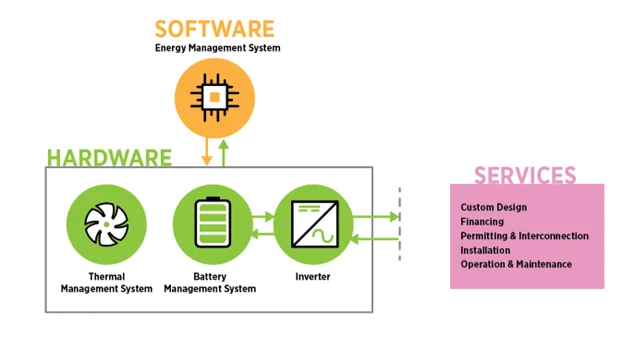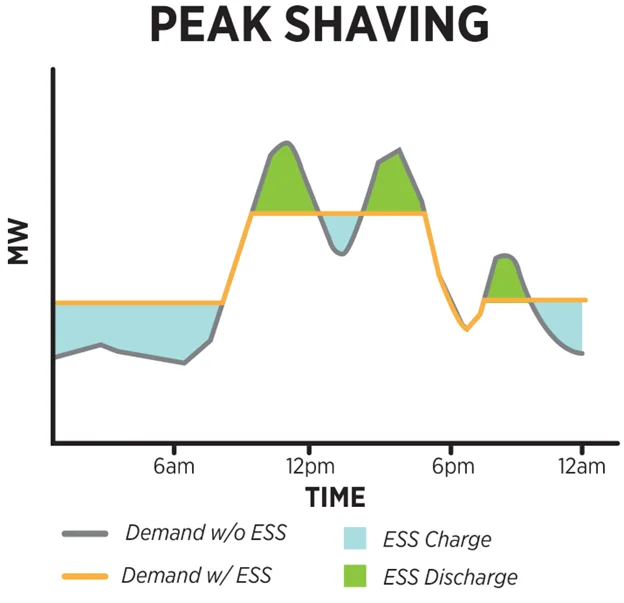TECHNOLOGY BASICS: What are Behind the Meter Energy Storage?
Behind-the-meter (on the customer side of the utility’s electric power meter) Energy Storage Systems (ESS) are used to monitor and control building electrical demand to manage periods of high demand that incur significant cost penalties for commercial and industrial customers. An ESS may be charged directly from on-site generation (e.g., solar or wind power) or from the grid, and discharged later to lower a facility’s electricity demand (e.g., to manage peak demand charges and/or time of use electricity prices).
The behind the meter energy storage providers evaluated offer “turnkey” lithium-ion energy storage solutions for their customers. These solutions include all critical hardware, software, and services required to successfully install and operate an ESS.
The main hardware and software components of an ESS include:
- Lithium-ion batteries and a Battery Management System (BMS) to insure safe operation of the batteries
- Inverter (Power Conversion System) to transform AC power to DC power and vice-versa
- Thermal Management Systems (i.e., HVAC) to maintain proper temperatures within the ESS
- Energy Management Systems (EMS) to monitor and control most of the components of an ESS and its electrical grid connection, including when and how to charge and discharge the ESS
Key services offered by “turnkey” energy storage providers include:
- Custom ESS designs based on site-specific details and customer needs
- Financing
- Permitting and Grid Interconnection
- Installation
- Operation and Maintenance

A common function an ESS performs is “peak shaving,” also known as demand charge management. An ESS uses stored energy to supply electricity during times of peak building demand to maintain building electricity demand below either a set threshold or a dynamically calculated and optimized threshold. This process not only saves customers costly demand charges on their energy bills, but also increases grid power quality, reduces the need for “peaker” power plants, and increases grid efficiency.

Another common function performed by an ESS is “peak shifting,” also known as time-of-use arbitrage, which uses stored electricity to reduce the electricity purchased for a building during peak electricity-price hours. The battery is charged when electricity is cheaper and discharged during the times at which a utility charges higher prices for electricity.

Customers can also elect to have their ESS connected to the utility or independent system operator (ISO) control systems to be compensated for providing grid services such as frequency regulation, emergency energy supply, and more. Such operation of the ESS is called demand response. Peak shaving, peak shifting, and demand response reduce customer electricity costs and the magnitude of the peak demand observed by the utilities.
An ESS may also be used as a backup power source for a facility power outage. The ability to operate a facility independently of the grid, like during outages, is referred to as “islanding.” This is becoming increasingly useful due to power outages that result from weather events and public safety power shutoffs (PSPS).